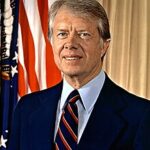The Decision
President Jimmy Carter signed the airline deregulation Act on October 24, 1978. This landmark legislation dismantled four decades of federal control over commercial aviation. The Civil Aeronautics Board had regulated routes, fares, and market entry since 1938. 📊 Airlines previously needed government approval for new routes and price changes. Carter’s administration believed competition would better serve consumers than regulation.
Breaking Down Regulatory Barriers
The Act phased out the Civil Aeronautics Board’s authority over three years. Airlines gained freedom to set their own fares and choose their routes. New carriers could enter the market without lengthy approval processes. 💰 The legislation promised lower prices through increased competition. Senator Ted Kennedy and economist Alfred Kahn championed the bipartisan effort. Carter embraced this free-market approach despite his Democratic Party’s traditional regulatory stance.
Implementation Strategy
The deregulation process began immediately after signing. Airlines could reduce fares by up to 50% without government approval. Route restrictions lifted gradually between 1978 and 1981. The Civil Aeronautics Board officially closed on December 31, 1984. ⚠️ Critics warned about safety concerns and service disruptions. Supporters argued market forces would optimize the industry better than bureaucrats.
Impact:
Immediate Economic Impact
Airline deregulation delivered dramatic results within the first decade. 💰 Average domestic airfares dropped by 33% in real terms by 1988. Passenger traffic doubled between 1978 and 1998 as flying became affordable. New low-cost carriers like Southwest Airlines expanded rapidly nationwide. Competition forced established airlines to improve efficiency and customer service.
Market Transformation
The airline industry underwent massive structural changes after deregulation. Hub-and-spoke networks replaced point-to-point routing systems. 📊 Airlines consolidated through mergers while new carriers entered niche markets. Frequent flyer programs and yield management systems emerged as competitive tools. Service to smaller cities initially declined but later recovered through regional partnerships. Air travel shifted from luxury service to mass transportation.
Long-term Historical Significance
Carter’s airline deregulation became a model for other transportation sectors. The success influenced trucking, railroad, and telecommunications deregulation efforts. 🌍 International aviation gradually adopted similar competitive approaches. Modern budget airlines trace their origins to this pivotal legislation. The policy created millions of jobs while saving consumers billions annually. Historians praise this achievement as Carter’s most successful domestic policy. The Act demonstrated how thoughtful deregulation could benefit both businesses and consumers simultaneously.
